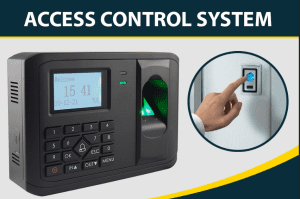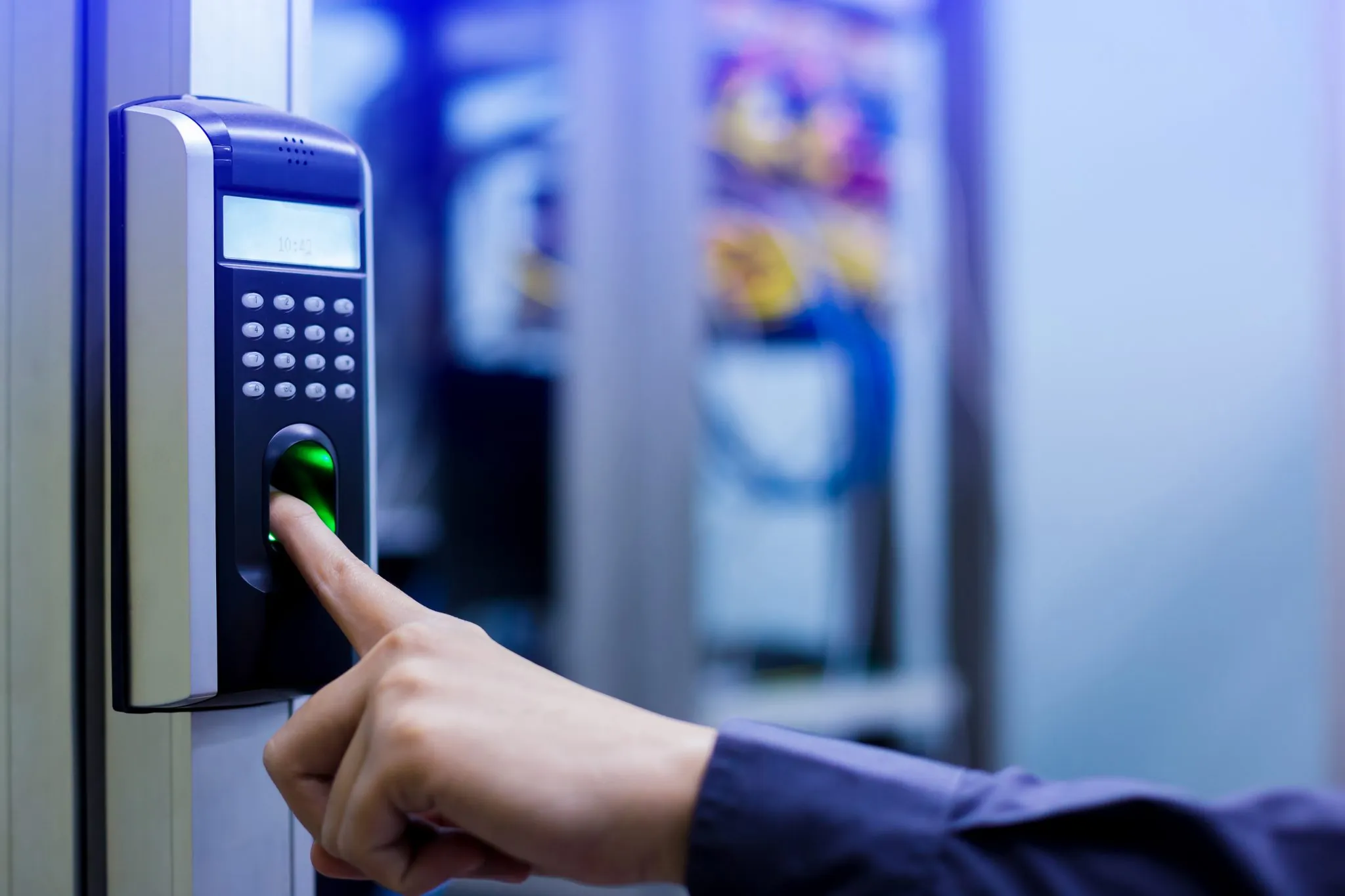In the digital age, where information is the lifeblood of businesses and security breaches loom as ominous threats, the concept of access control systems emerges as indispensable protectors of our modern world. Imagine invisible gatekeepers guarding your most valuable digital and physical assets, deciding whom to let in and whom to keep out. It’s not science fiction, but the captivating reality of access control systems.
In this exploration of the enigmatic realm of access control, we will unravel the secrets of these digital sentinels, unveiling their significance, providing real-world examples, and guiding you through the intricate types that underpin modern security infrastructure.
Keep your eyes reading this insightful post entailing all about access control system—a journey that promises not just security but an understanding of how you can safeguard your world.
Understanding Access Control Systems Examples & What Makes Them Crucial Requirement?
What is an Access Control System?
Access control systems control who can view or use resources in a computing environment. It is a fundamental security concept that reduces risk to the organization or business.
There are two types of access control systems: physical and logical. Physical access control system restricts access to campuses, buildings, rooms, and physical IT assets. Logical access control restricts connections to computer networks, system files, and data.
Organizations use access card readers, user credentials, auditing, and reports to track employee access to restricted business locations and proprietary areas such as data centers. Access control panels, alarms, and lockdown mechanisms are used in these systems to restrict access to rooms and buildings.
Why is Access Control Important?
The goal of access control systems is to reduce the security risk of illegal access to physical and logical systems. Access control is a critical component of security compliance programs because it ensures that security technology and access control policies are in place to protect sensitive data, such as customer information.
Access control systems are complex and difficult to manage in dynamic IT environments involving on-premises and cloud services. In the aftermath of high-profile breaches, technology vendors have shifted away from single sign-on systems and toward unified access management, which provides access controls for both on-premises and cloud environments.
Access Control Systems Examples
Let’s explore a few common examples of access control systems:
- Biometric Access Control: Biometric systems authenticate individuals based on unique physical or behavioral characteristics, such as fingerprints, iris scans, or facial recognition. These systems are highly secure and are often deployed in high-security environments.
- Keycard or RFID Access Control: This system grants access to individuals who present a keycard or RFID (Radio-Frequency Identification) tag to a reader. The system validates these credentials and grants access as necessary.
- Password-Based Access Control: Password-based access control is prevalent in the digital realm, where users must enter a username and password to gain access. Security can be further enhanced through multi-factor authentication (MFA), which requires additional verification steps.
- Access Control Lists (ACLs): In computer networking, ACLs specify which users or systems are permitted or denied access to resources such as files, folders, or networks.
Similar Article: How To Improve Network Scalability

How Access Control Works?
The functionality of Access Control Systems revolves around the processes of identification, verification, and authorization. It begins with the system’s ability to discern and validate the identity of an individual or entity, ensuring that the claimed identity aligns with reality. Once this verification is established, the system proceeds to authorize the level of access and the specific actions associated with the authenticated username or IP address.
To achieve this, directory services and protocols come into play, with notable examples including the Lightweight Directory Access Protocol (LDAP) and the Security Assertion Markup Language (SAML). These mechanisms serve as the bedrock for access controls, facilitating the authentication and authorization of users and entities while enabling seamless connections to various computer resources, including distributed applications and web servers.
Organizations adopt diverse access control models, tailoring their choices to align with compliance requirements and the desired security levels for safeguarding their IT infrastructure. These models are instrumental in preserving the integrity and confidentiality of sensitive information, ensuring that access to critical resources is managed and monitored in accordance with the organization’s security objectives.
Types of Access Control Systems in Security
In the realm of security, Access Control Systems play a pivotal role, and there are several primary models governing their operation:
Mandatory Access Control (MAC): Within the purview of security, MAC stands as a prominent model where a central authority meticulously regulates access rights. This authority operates on grounds of multiple security levels, and it finds prevalent usage in government and military domains.
Discretionary Access Control (DAC) – DAC, on the other hand, places the power of access control in the hands of resource owners or system administrators. These custodians set the policies dictating who or what is authorized to access specific resources within the system. Many DAC systems offer the capability to restrict the propagation of access rights, but they are critiqued for their lack of centralized control.
Role-Based Access Control (RBAC) – RBAC is a widely embraced mechanism for access control, pivoting on the concept of restricting access to computer resources based on defined business functions, such as executive level or engineer level 1, rather than individual user identities.
RBAC systems are underpinned by intricate role assignments, role authorizations, and role permissions crafted through role engineering. These elements collectively regulate employee access to systems, and RBAC systems can be harnessed to enforce both MAC and DAC frameworks.
Rule-Based Access Control – In this security model, system administrators wield the authority to define rules that govern access to resource objects. These rules often hinge on conditions such as time of day or geographical location. It is not uncommon to employ a combination of rule-based access control and RBAC to enforce robust access policies and procedures.
Attribute-Based Access Control – In the sphere of Access Control Systems, Attribute-Based Access Control emerges as a methodology that orchestrates access rights by meticulously evaluating a set of rules, policies, and relationships. This evaluation is based on the attributes of users, systems, and prevailing environmental conditions. These attributes collectively guide and govern access control within the system, ensuring a multifaceted and context-aware approach to security.
Implementing Access Control
Access control is seamlessly integrated into an organization’s IT ecosystem, often encompassing identity management and access management systems. These systems encompass access control software, a robust user database, and a suite of management tools tailored for access control policies, auditing, and enforcement. When a new user is introduced into the access management system, proficient system administrators rely on automated provisioning systems to establish permissions.

Challenges in Access Control and Network Elites’ Solution
Access control faces several challenges, particularly in today’s complex IT landscapes. These challenges stem from the distributed nature of modern IT environments, both physically and logically. Here are some of the specific difficulties:
- Password Fatigue: Users often struggle with managing and remembering numerous passwords, which can become overwhelming.
- Dynamically Managing Distributed IT Environments: Monitoring assets spread across various locations can be a complex task, requiring effective management strategies.
- Compliance Visibility Through Consistent Reporting: Achieving consistent compliance reporting can be demanding, as it necessitates a clear overview of access and security across the entire organization.
- Centralizing User Directories and Avoiding Application-Specific Silos: Preventing the fragmentation of user directories requires careful attention to avoid silos that can hinder efficient access control.
- Data Governance & Visibility Through Consistent Reporting: Ensuring comprehensive data governance relies on consistent reporting practices to maintain control and visibility over data access.
In this dynamic environment, organizations often grapple with distinguishing between authentication and authorization. Authentication involves verifying individuals’ identities, often through methods like biometric identification and Multi-Factor Authentication (MFA). The complexity of distributed assets in modern environments offers various authentication avenues.
Trust Network Elites for Security Transformation
Network Elites is your trusted partner in redefining security standards, making peace of mind a tangible reality. Our innovative solutions revolutionize premises protection, offering absolute control over who gains entry and who does not. With our advanced access control systems, you can leave behind traditional keys, which are susceptible to loss or duplication.
Instead, embrace a world where personalized keycards or biometric identifiers seamlessly grant access exclusively to authorized individuals. Imagine a sleek reader emitting a mesmerizing blue glow as it scans your fingerprint, swiftly unlocking the door with a satisfying click – all achieved in a matter of seconds.
Our robust systems not only enhance security by thwarting unauthorized entry attempts but also boost efficiency by eliminating time-consuming manual processes, such as issuing physical keys or manually recording attendance. Enjoy unparalleled peace of mind, knowing that every movement within your facility is meticulously logged, providing a precise record for potential audits and investigations when the need arises.
Network Elite’s access control systems transform the routine task of opening doors into an immersive experience imbued with sophistication at every touchpoint. With our solutions, you can confidently address the challenges of access control in today’s dynamic and distributed IT environments.








